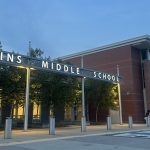PEABODY — The Massachusetts Education-to-Career Research and Data Hub (E2C Hub), in collaboration with the Department’s Office of Literacy and Humanities, has published a new data set story on the importance of early literacy and what Massachusetts is doing to support it. In this data set, Peabody Public Schools was listed as an example of a district that excels in early literacy because it follows a comprehensive approach.
The data listed four areas to point to:
- “Curriculum: Through collaborative, teacher-led process, Peabody Public Schools adopted a new ELA curriculum in 2022-23 to ensure all students across the district have access to core instruction using high-quality instructional materials.
- Screening assessments: Educators screen students three times a year, review students’ assessment data in regular meetings, and explain screener results to parents and guardians in letters sent home in the parents’ primary language and in parent-teacher conferences.
- Targeted interventions: Screening assessments help teachers identify students who are not meeting benchmarks, enabling teachers to tailor their instruction and coordinate extra help for students, such as through tutoring sessions before school.
- Teacher training: Professional development time was built into each phase of the program, ensuring teachers and administrators received support with both instruction and assessment.”
For the 2022-23 school year, the data shows that 33.3% of Peabody students in kindergarten and grade one met benchmarks on early literacy at the beginning of the year; that number jumped to 50% by the end of the school year.
For the 2023-24 school year, the percentage began at 48.6% and ended at 72.7%. And for the 2024-25 school year, the percentage at the beginning of the year was 59.8%, and the year ended with 69.3% of students meeting the benchmarks.
The data emphasized that “Peabody’s focus on literacy extends beyond K-3. As one of 15 districts to receive a grant through the state’s Literacy Launch program in early 2025, Peabody is working with community partners to promote early literacy education in community-based preschool programs. Meanwhile, students in grades 6-12 are building literacy through the use of high-quality, grade-appropriate reading materials and tasks, and an emphasis on student ownership of the work.”



